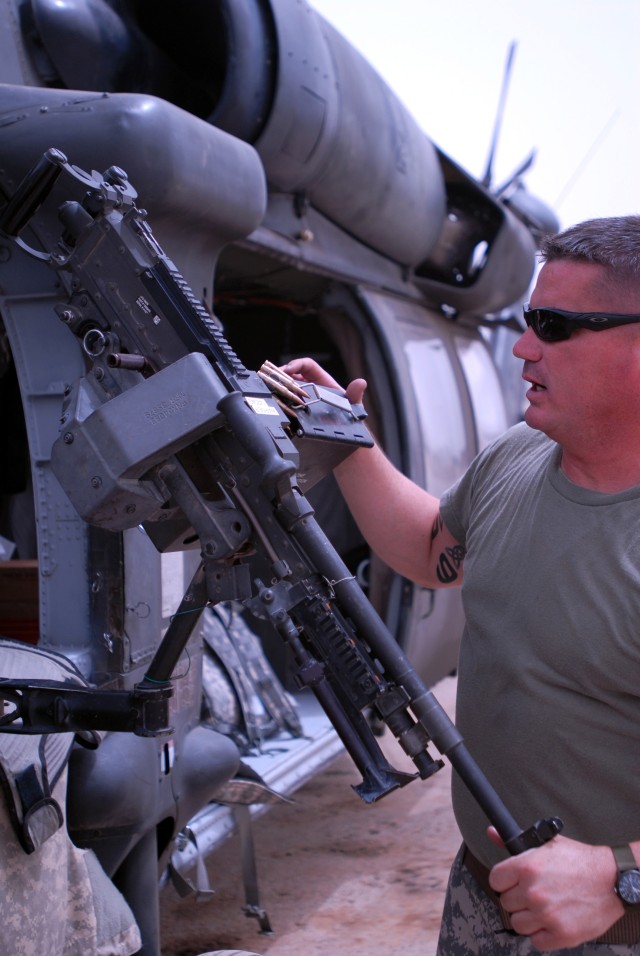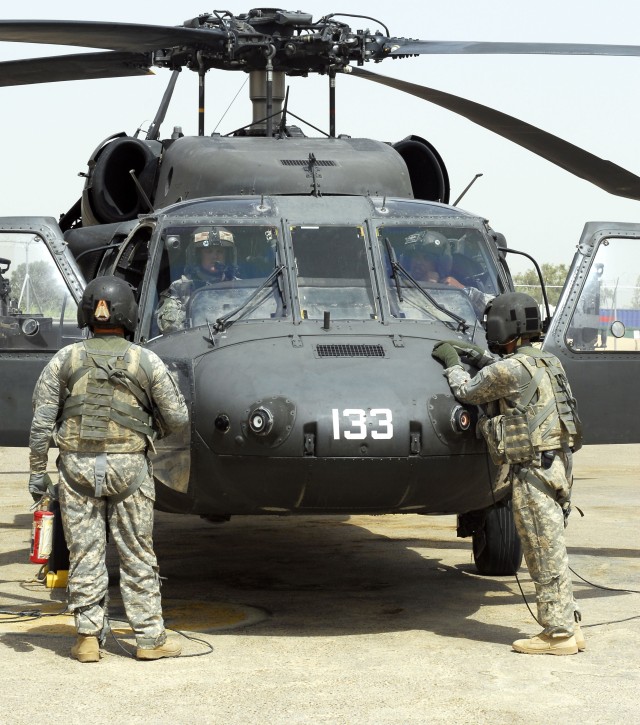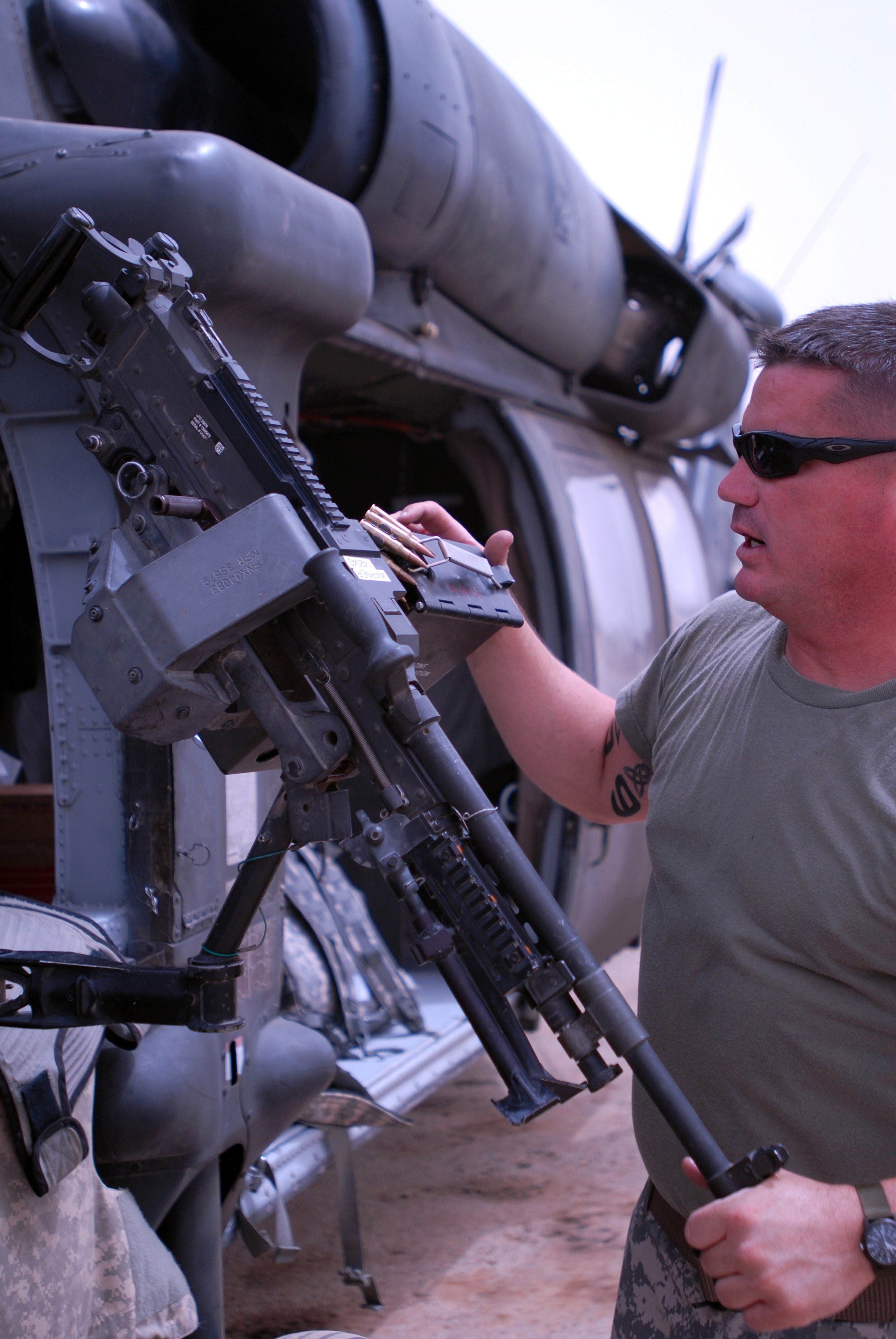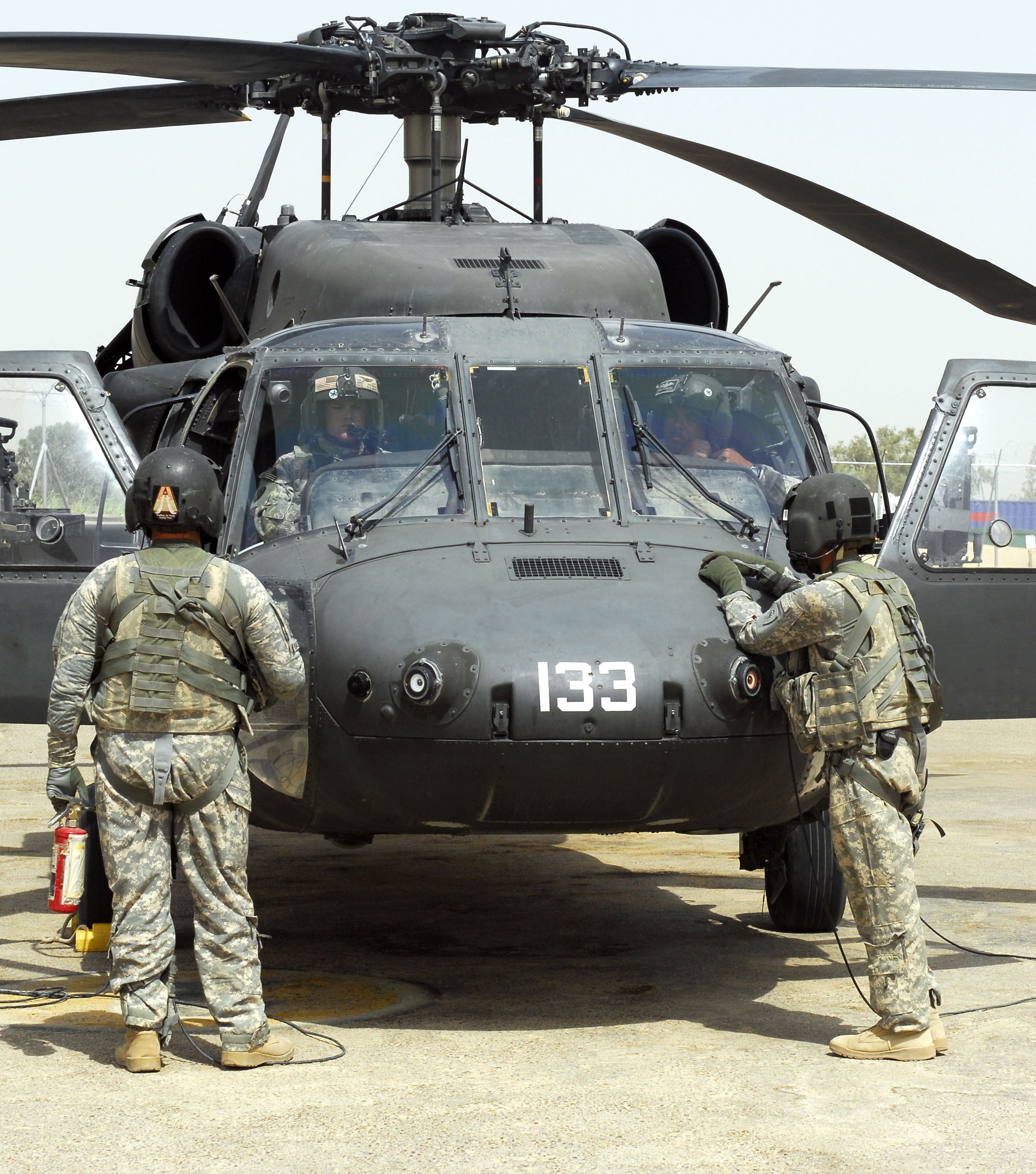A Co. 1st Battalion of the 137th Aviation Regiment has a very unique mission. They are tasked with flying three missions sets here with the primary focus of transporting General Odierno, Lt. Gen. Jocaby and Lt. Gen. Hemlick. And the backbone of the unit is a group called the Crew Dogs.
"Crew dogs are the ones in before the mission getting everything ready," 1st Lt. Jack MacKeverican, Columbus, Ohio, and acting executive officer said. "The tradition of a crew dog is to work hard; if something breaks they are on it and turning wretches. They keep us a float for sure. They are a group of guys that work beyond their jobs, and beyond their rank."
The term crew dog goes back 20-25 years. It started during the unit's deployment to Kosovo and Bosnia when crew chief and door gunners started to take on a very heavy work load.
It isn't necessarily a fraternity; it is more of a mantra, Staff Sgt. Joseph W. Korecz, Mentor, Ohio, and crew chief instructor explained. The crew dogs do everything, and they are good at it.
Many of the guys that belong to the crew are Soldiers pulled in from different units to fill gunner slots.
"A lot went into consideration when deciding on the gunners," Korecz said. "We were looking for people with previous deployment experience; we knew that certain abilities would be an asset."
The gunners that were chosen carry a wide variety of military skills, such as cooks, truck drivers and infantry men.
Sgt. Brant Warner, Bowling Green, Ohio, and infantry man, was one of the Soldiers pulled in as a door gunner for the mission here.
"The 137th was on AT and my unit was training them," Warner said. "A bunch of the guys were talking about how they needed gunners. At that point in time I had been back from a previous deployment for only 9 months."
Warner believes the unit mission is of utmost importance.
"The teams fly the commanding general around, he is the policy maker," Warner said. "To get him where he needs to go is key. I've been to the president of Iraq's house three days before the withdrawal from the cities. We knew they were talking about policy in there, it's pretty cool to be able to say hey I was there, I had a part in that."
With every flight comes many hours of maintenance in aviation.
"For every 2 hours we fly there is 3-5 hours of maintenance," Sgt. Nick T. Delotell, Cuyahoga Falls, Ohio, and crew chief said. "Before we go anywhere, we are here 3-4 hours early, and when the mission is finished we are here another 2-3 hours cleaning and prepping for the next day."
There is a vast team effort that goes into the maintenance of the aircraft, and that effort often leads to long days.
"We work 14 hour days a lot of the time," Warner said.
Warner went on to explain if one crew is out flying and there are guys on the ground, a lot of the time the crew will stay late to help button the aircraft up when the crew gets back. The guys will even go as far as grabbing dinner for the incoming team if they have missed a meal.
"Crew dog's emphasis is on team work, the mentality is everyone pitches in," Warner said.
A lot of work goes into keeping things running, and the flight time is the pay off. Great attitudes are shared by everyone despite the long hours and 4the crew dogs are still going strong.
"I have been with the unit for five years," Sgt. Michael G. Mastriana, Hillard, Ohio, and crew chief said. "This team is as close to a family as I think you can get, everyone pulls for each other. It's hard work, but definitely worth it at the end of the day."




Social Sharing